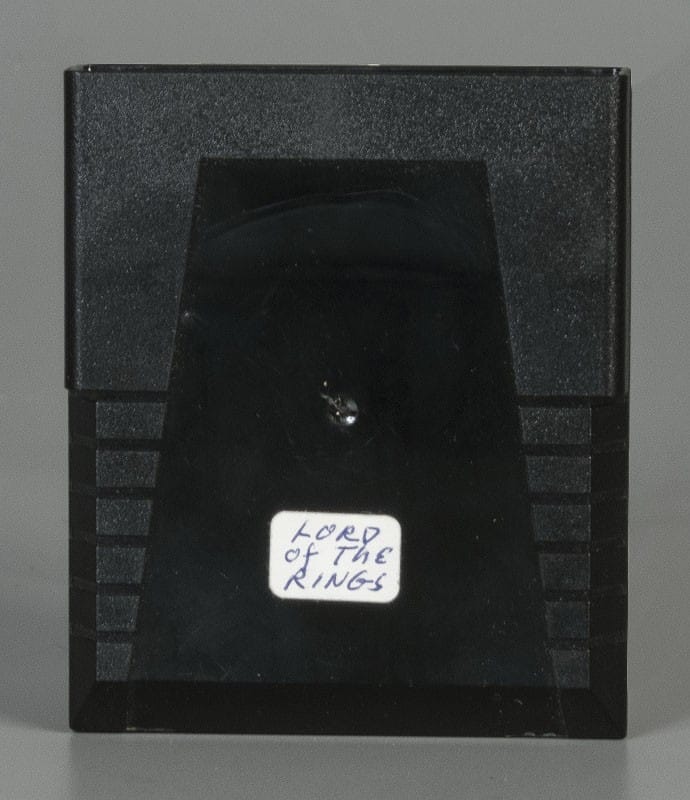One Prototype to rule them all, One Prototype to backup and save.

Long before Peter Jackson brought The Lord of the Rings to life on the big screen, others tried their hands at adapting the J.R.R. Tolkien fantasy classic. With the 1978 animated film directed by Ralph Bakshi just a few years prior, Parker Brothers began advertising a video game adaptation in 1982.
Scheduled for a winter 1983 release, The Lord of the Rings: Journey to Rivendell for Atari 2600 home consoles would have allowed players to play as Frodo, picking up familiar characters including Gandalf and Aragorn, on an adventure from the Shire to Rivendell. That is, had it been released.
The advertisements from Parker Brothers were long thought to just be graphic mock-ups, with many speculating that no game was ever truly in production. That would change when a version of the game appeared online, seemingly in a nearly complete state.

Included with the donation of the Mark B. Lesser papers at The Strong was a Parker Brothers Atari 2600 cartridge with a handwritten label for “Lord of the Rings,” which was designed and programmed by Mark Lesser. Despite the age of the erasable programmable read-only memory (EPROM) that stored the game binary, the cartridge still worked, so the next challenge was to back up its contents.
While the EPROM chips could be removed and read directly, removing both the fragile plastic shell and the chips inside would potentially damage the original cartridge. Instead, I started with the MaxFlash USB Cartridge Programmer, which allows the original contents to be backed up to a PC via a USB cable simply by plugging in the cartridge. Unfortunately, this did not work properly, resulting in non-working files that differed every time I attempted it.

I reached out for advice to AtariAge user Thomas Jentzsch, who had previously backed up other unreleased titles. His solution applied a combination of tools to back up game cartridges using an original Atari 2600 console. First, a custom dumper ROM needed to be loaded on an Atari 2600 using the Harmony cartridge, which uses an SD card to load homebrew and other software. This custom ROM allows for dumping of Parker Brothers cartridges to another homebrew device called the SaveKey, a device typically used to store high scores and game setting but, in this case, it would store the binary file from the cartridge.
One challenge remained, as the SaveKey wasn’t simply a USB stick, instead it plugged into a controller port of an Atari 2600. The 2600-daptor II, which allows select Atari controllers to work on PC hardware, would do the job, provided it is flashed with the AtariVox firmware. Upon backing up the SaveKey’s contents and formatting the code properly, we had a properly working backup of the unreleased Lord of the Rings game!
The resulting file matched that of a version available online, but this provided a rare opportunity to verify the contents of an unreleased game. These digital versions limit the wear on the original cartridge and will allow guests and researchers visiting The Strong to access The Lord of the Rings for decades to come!



